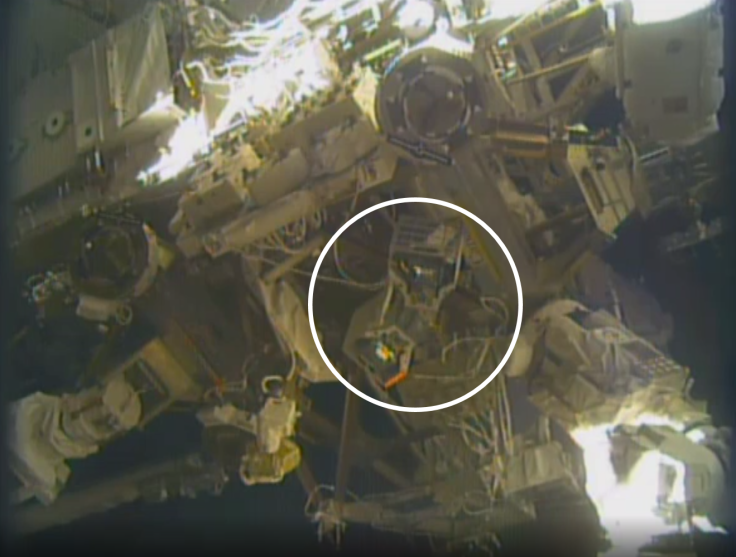NASA Astronauts Install 'Robot Hotel' And Its Occupants Outside ISS
KEY POINTS
- Astronanuts installed a 'robot hotel' outside the ISS
- The robot hotel was designed to protect and provide the right temperature for its 'tenants'
- Its first occupants are two robots that can 'sniff' gas leaks
NASA's "Robot Hotel" is finally installed outside the International Space Station (ISS) and, has received its occupants. Apart from providing extra storage, having the "robot hotel" also helps expedite important tasks.
One of the items sent to the ISS during SpaceX's 19th commercial resupply mission on Dec. 5, 2019 was a robot protective storage unit called Robotic Tool Stowage (RiTS). On Tuesday, July 21, NASA astronauts Chris Cassidy and Robert Behnken finally installed the robot hotel outside the ISS as a part of their five-hour and 29-minute spacewalk.
Specifically, they installed RiTS to the Mobile Base System (MBS), which is the moveable platform that provides power for the external robots. There, RiTS can conveniently move along with the robots that will use them.
How's your day going? So far on today's spacewalk, @AstroBehnken and @Astro_SEAL have:
— NASA (@NASA) July 21, 2020
🤖Installed a Robotics Tool Storage outside the @Space_Station
🔋Removed H-fixtures for future power upgrades
🔩Prepared for a @Nanoracks airlock installation
Stay tuned to see what's next: pic.twitter.com/dL59VeEORP
"RiTS provides thermal and physical protection for tools stored on the outside of station, not only freeing up room on board but also allowing the Canadian Space Agency's Dextre robot to access them more quickly," RiTS Hardware Manager Mark Neuman said in a news release from NASA.
RiTS's first occupants are two Robotic External Leak Locators (RELL), designed to detect leaks from the station. The first RELL unit was launched in 2015 and it was so successful that a back-up unit was launched in 2019.
However, having to keep the units inside the ISS takes up valuable space that could be used for other experiments or hardware. Further, keeping RELL inside the station takes up precious time in each deployment because it has to wait for 12 hours in space before usage to make sure the unit is free of all the gases and water vapor from inside the ISS. Then, astronauts on a spacewalk would have to attach it to the MBS.
The extensive process of deploying and using RELL meant it could take weeks or up to months from the time a leak is suspected to actually finding out where it may be coming from. Now that RELL is already outside the station, protected by RiTS, the process of searching for potential leaks would be substantially expedited.
"RELL is a great example how robots with the right tools can simplify life for astronauts," Neuman said. "Dextre can use RELL to detect ammonia leaks, eliminating the need for astronauts to perform the same task during a spacewalk."

© Copyright IBTimes 2024. All rights reserved.






















